Syn.: Regelia magnifica H. Wendl., Regelia princeps Balf. f., Stevensonia viridifolia Duncan
Family: Arecaceae Bercht. et J. Presl
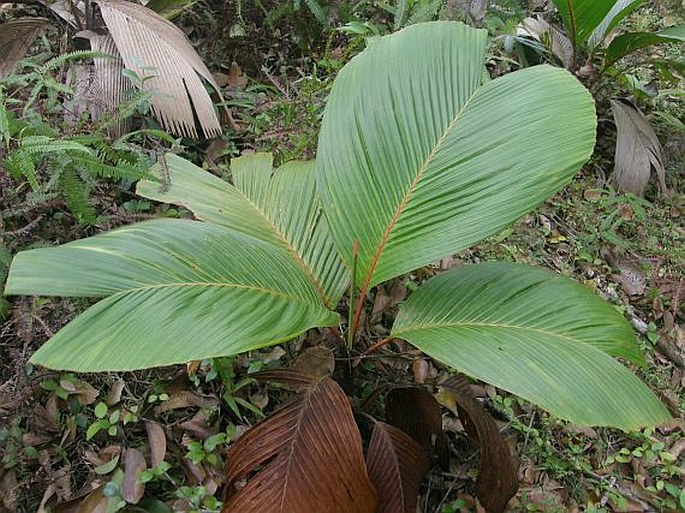
Distribution: Monotypic genus, endemic to inner islands of the Seychelles archipelago. It is one of the rarer species, primary area comprises only granitic islands of Mahé, Praslin and Silhouette. This genus is related to other endemic Seychellan palms (Nephrosperma van-houtteanum, Phoenicophorium borsigianum and Roscheria melanochaetes).
Ecology: Under-storey tree in moist to swampy forests along streams and on steep hillsides and ledges, usually in altitudes 300–850 m a. s. l.; climate is permanently hot and very wet over all the year. It is often found in small stands.

Description: Monoecious palm up to 30 m; trunk is simple, slender, spiny when young, with a cone of stilt roots at its base. Yellowish green leaves form a distinctive open crown at the top of trunk. They are up to 3 m long, with pinnate veins and a bilobed apex, margin is entire on young plants but because of wind damage the leaves tend to irregular slits when mature; petiole and sheats are spiny on young plants but unarmed on mature trees. Inflorescence is axillary branched panicle; flowers are unisexual, 3-merous; male flowers have 6 stamens and rather big pistillodium, the female flowers have 6 staminodes, 1 celled ovary and 3 stigmas. Fruits are globose brownish-green drupes up to 2.5 cm in diameter.
Possible confusion: This species can be easily distinguished from the other endemic palms of Seychelles by the presence of stilt roots. The most similar seychellan palm is Phoenicophorium borsigianum, which differs also in the more fraying margin of the leaves.
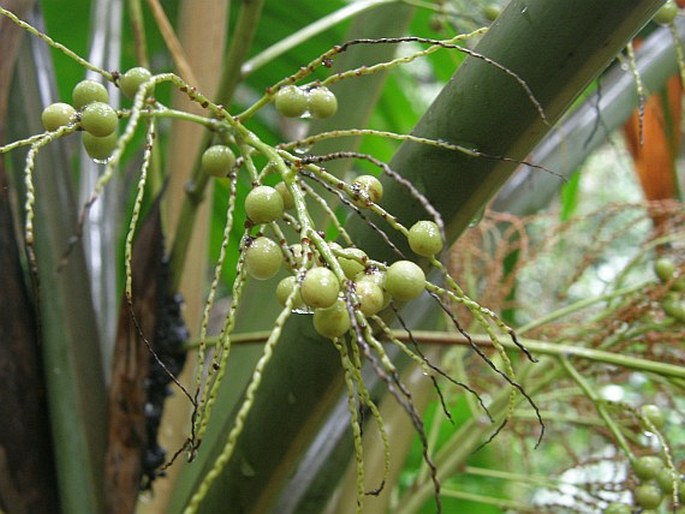
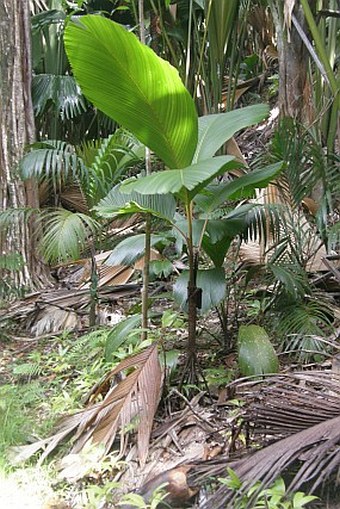
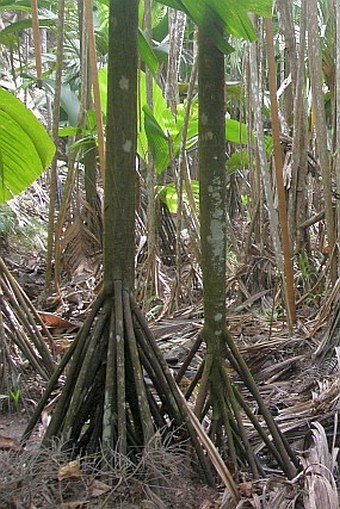

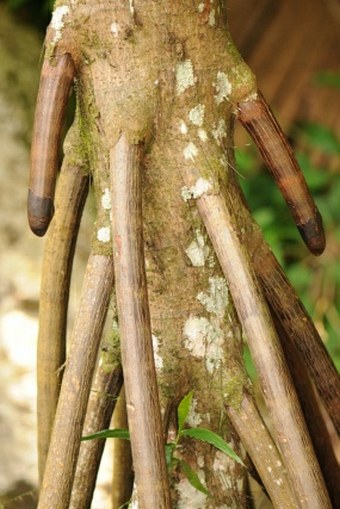
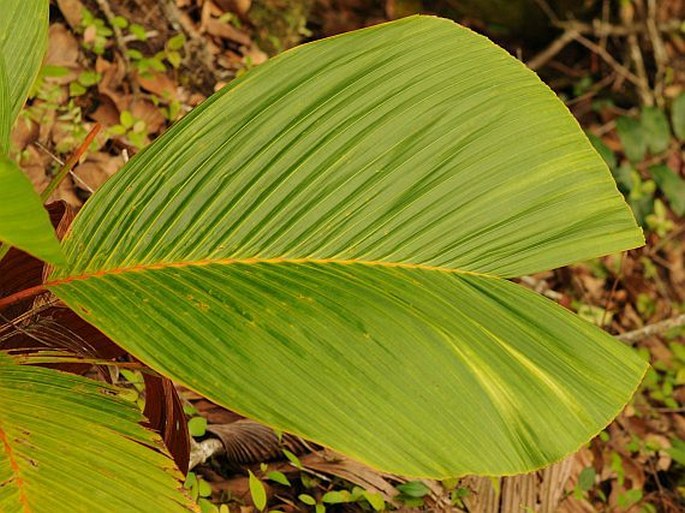

These images were taken in Seychelles, Mahé and Praslin islands (by Vít Grulich and Alena Vydrová, 1.–9. 2. 2011).


